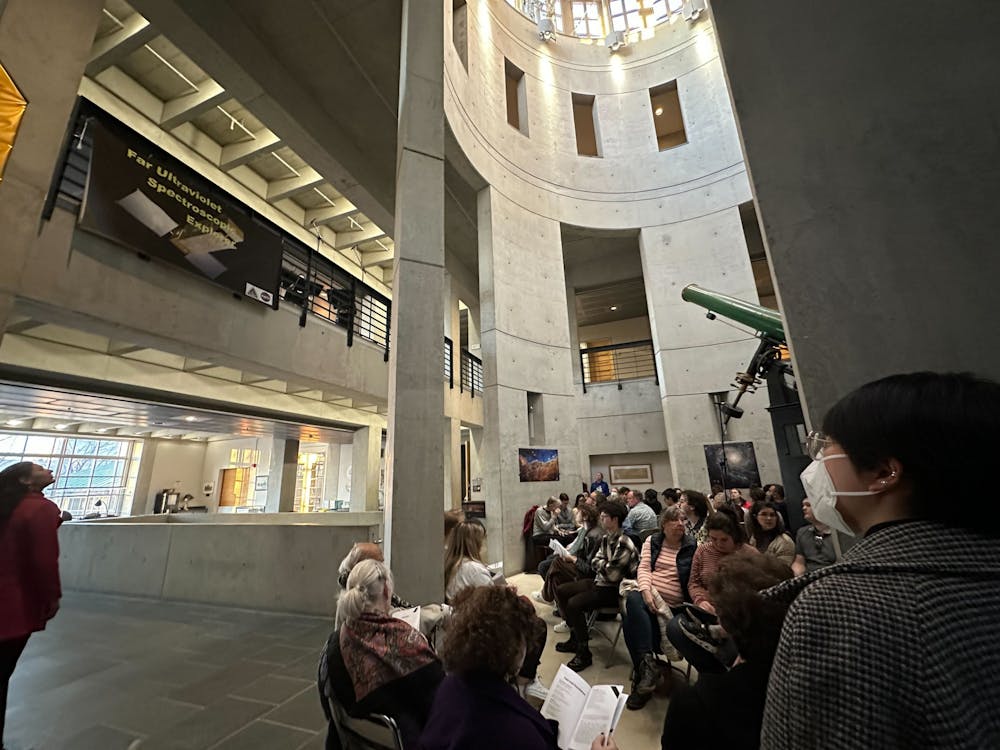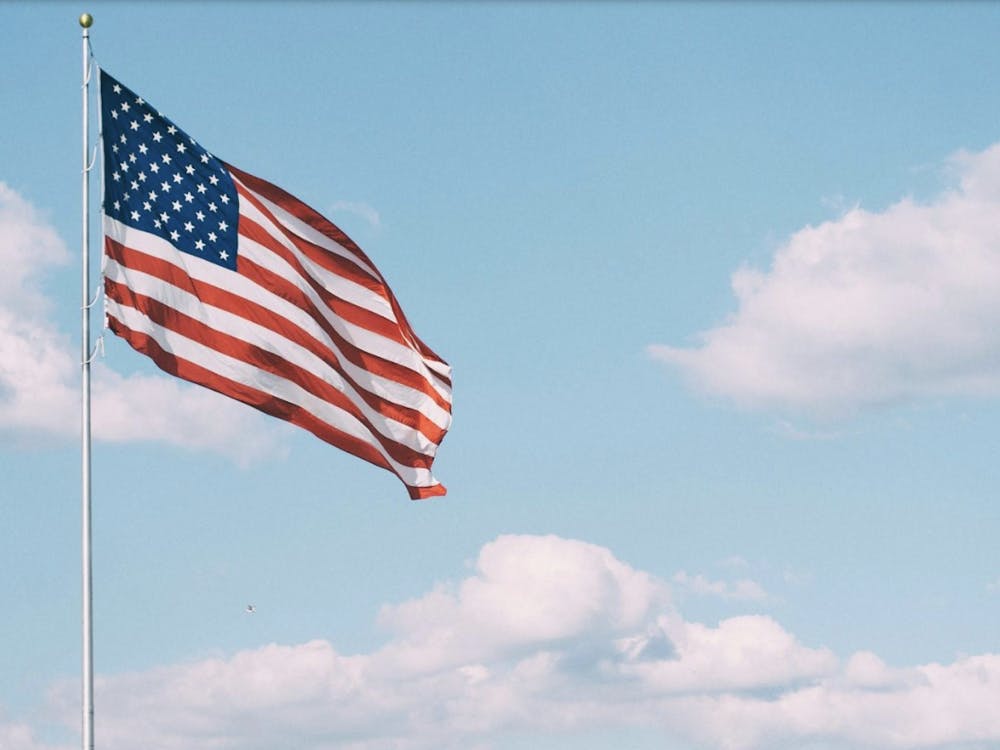The Bloomberg Center for Physics and Astronomy hosted “Music and Astronomy: New Music for Voice Inspired by Space” on March 4, which featured original compositions and vocal performances by Peabody Institute students. The event, free and open to the public, was a collaboration between the Peabody Department of Composition and the Department of Physics and Astronomy, bridging the two different campuses for an evening of interdisciplinary exploration.
Each composer drew inspiration from an image of deep space, which were curated by Physics and Astronomy Professor Brice Ménard. Some of the images were taken by the James Webb Space Telescope, operated right across the street from the Bloomberg Center. The composers also looked at the NASA descriptions for each photo and found unique ways to incorporate the text in their work. The resulting five original pieces were performed by vocalists from the studio of Ah Young Hong, an associate professor in the Vocal Studies Department at Peabody.
Upon entering the Bloomberg Center, I found the spacious lobby bustling with people who circled the room in an eager search for an open seat. A distinct feature of the interior architecture is the round, tower-like structure at the room’s center; for the event, folding chairs were set up in concentric circles around the big telescope inside the tower, and Ménard’s curated images hung on its walls.
It was an unconventional venue, and the concert took full advantage of the opportunity. Rather than having the audience face a single performance area, the inner circles faced outward while the outer ones faced inward. Throughout the concert, the vocalists appeared on different sides of the second-floor balcony. The seating arrangements allowed everyone to have different vantage point, but the intimacy also emphasized the audience’s shared experience.
The event opened with Hong singing “O ignee Spiritus,” or “O fiery Spirit,” written by Hildegard von Bingen in the 12th century. As the haunting melody echoed in the concrete room, I noticed how the room resembled a cathedral, with natural light filtering through the windowed central tower. The short piece was a great way to evoke a sense of unity between the past and the present as an introduction to the original compositions.
The four pieces that followed were world premieres by Peabody Composition students Noah Goulet, David Carlton Adams, Aaron Zimmer and Qiu Yu. The first, “Carina,” took its name from an image of the Carina Cliffs, an eroded edge of dark interstellar dust. The song only used one word, “Carina,” whose sound was repeated and transformed throughout the piece. In the program notes, composer Goulet explained that this was because text alone could not capture the essence of the Carina Cliffs.
“Carina” was striking in its layering of the vocals of sopranos Cynthia Hu and Rachel Steelman and mezzo-sopranos Leisha Casimiro and Ruya Ozveren. Their voices would build, fade and cut out, producing both powerful dissonance and piercing harmonies. Reveling in moments of silence, this piece was incredibly evocative of deep space and its expansiveness.
Next, Hu and Steelman performed Adams’ “The Tarantula Nebula.” In contrast to the previous composition, “The Tarantula Nebula” extracted and manipulated the text from the NASA image description in a variety of ways. The piece was notable for its playfulness, including spoken interjections and the repetition of phrases like “cosmic arachnid.”
The third original composition was Zimmer’s “Prayer for a Dying Stargod,” inspired by an image of the Bubble Nebula. Casimiro began with a low, strained note that sets up the narrative behind the piece; in the program notes, Zimmer summarizes this as the lament of a goddess witnessing the death of her celestial lover. As the sole performer, Casimiro skillfully told this story through her cutting vocals. Her delivery made no attempt to disguise the effort behind each sound, conveying the painful emotional journey of a grieving goddess.
Steelman and Casimiro then performed Yu’s “A Perfect Spiral.” The duet was based on an image of spiral galaxy M74, an island universe consisting of about 100 billion stars. With the interplay of their two voices, which rose, fell and bounced off each other, the composition expertly translated the image for its listeners.
After an interlude of John Cage’s “Experiences No. 2,” sung by Hong, the four student vocalists returned with “The Light, the Dark, and the Dusty” from senior Merrick Ohata. It began with two vocalists standing on one end of the balcony, and later into the piece, two more voices joined in from other sides of the room. With sound coming from all angles and reverberating through the room, I felt transported to the Milky Way starfields from the image that inspired the piece.
The evening came to a close with a second performance of “O ignee Spritus.” This time, however, Hong was joined by her four students, whose voices progressively built on each other. Positioned on all sides of the room, they sang the same melody at different rates, which had a striking effect in the brief moments when they joined together.
The stunned audience remained quiet throughout the concert, but at the conclusion of this final piece, they gave the performers an enthusiastic standing ovation.
In the program notes, Composition Professor Michael Hersch, whose relationship with Ménard led to the interdisciplinary event, expressed his desire to see similar projects in the future.
“One of the immense joys of working at Peabody has been the conservatory's relationship with the totality of Johns Hopkins University,” he wrote. “The performance this evening is the first of what we hope will be many contacts between our departments in the future and, indeed, the beginning of far more collaboration like this university-wide.”
Cynthia Hu is a Sports Editor for The News-Letter. She did not contribute to the reporting, writing or editing of this article.





